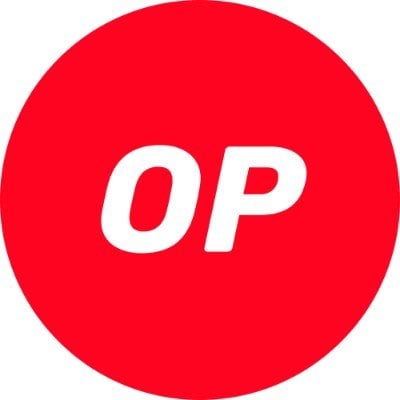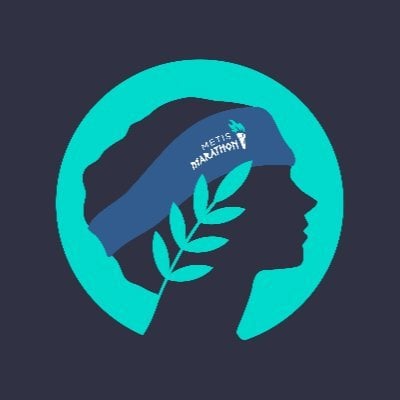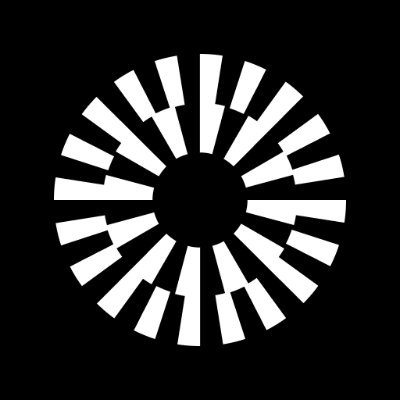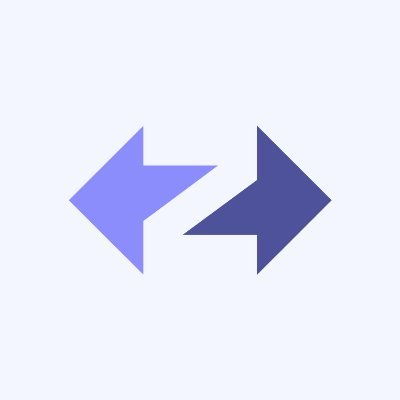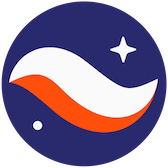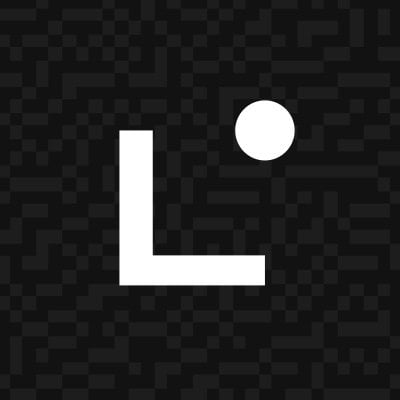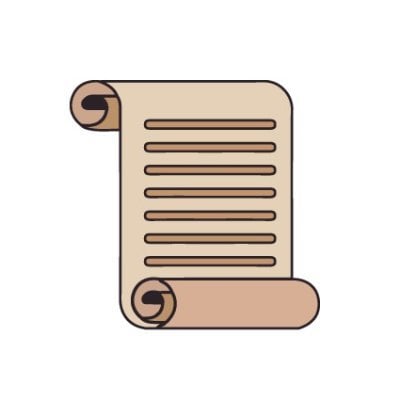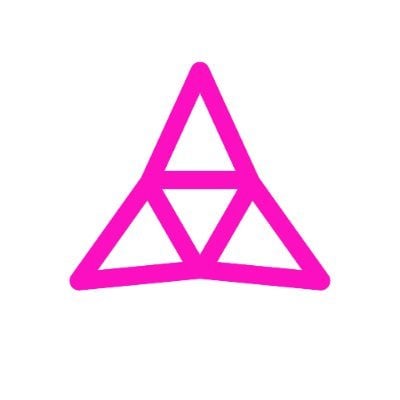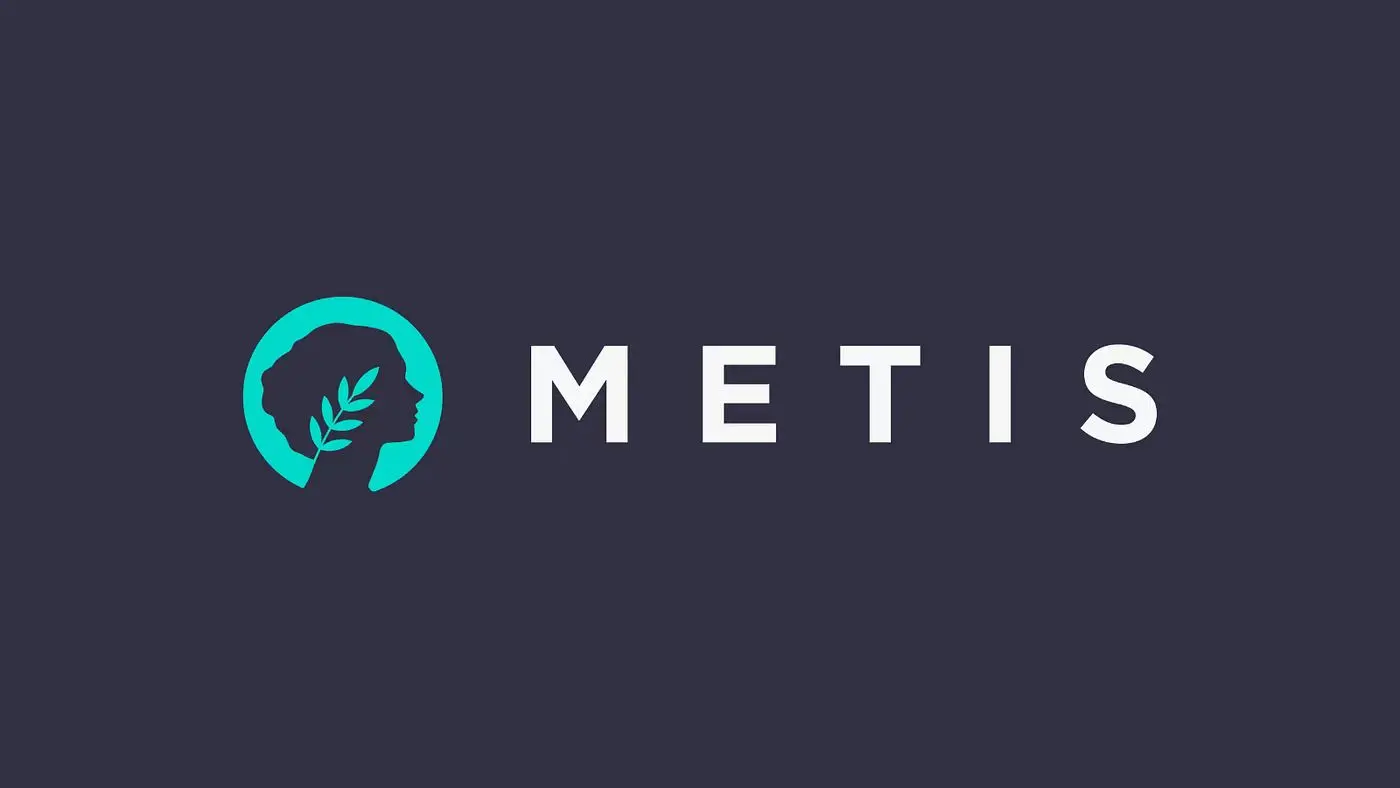The Layer2 battle is about to begin, and the system reviews the latest developments of 11 major Layer2 networks
Author: Grapefruit, ChainCatcher
As the upgrade in Cancun approaches, Layer 2 networks have become the hottest narrative track in the second half of 2023. Since July, the TVL of Layer 2 has often remained above $10 billion.
Recently, several established public chains have announced their shift to Layer 2, with some securing significant financing.
On July 17, the Celo development organization cLabs proposed to transform Celo from an independent EVM-compatible Layer 1 blockchain to an Ethereum Layer 2 based on the OP Stack.
On July 12, the ZK-based Layer 1 public chain Manta Network announced the launch of Manta Pacific, a Layer 2 network designed specifically for zero-knowledge proof (ZK) applications based on the OP Stack. Subsequently, on July 19, its developer p0x labs completed a $25 million Series A financing round at a valuation of $500 million, led by Polychain Capital and Qiming Venture Partners.
In addition to established Layer 1 networks transitioning to Layer 2, native Layer 2 networks have also been active with continuous updates.
Among them, representative networks from the Rollup family, such as Arbitrum, zkSync, and StarkNet, have announced the launch of open-source toolkits Stack for building corresponding Layer 3 networks; the Optimistic Rollup fork project MetisDAO Foundation released its incubated new project ZKM in the Hybrid Rollup family; and Loopring announced the construction of its own Layer 3 on the zkEVM Layer 2 network Taiko, among others.
Clearly, the Layer 2 market has entered a stage of intense competition. According to the crypto data platform Rootdata, there are currently 77 Layer 2-related network infrastructures, including modular blockchains, zkRollup, Optimistic Rollup, application chains, and more.
At present, the Layer 2 market mainly focuses on two mainstream scaling solutions: Optimistic Rollup and zkRollup. So, what representative networks are there in the Optimistic Rollup and zkRollup families? What progress have they made? What opportunities are there for user participation?
1. Optimistic Rollup Family: 5 Networks: Arbitrum, Optimism, Metis, Boba, Mantle

Arbitrum has a TVL exceeding $6 billion, ranking first in the Layer 2 track
As of July 20, the value of crypto assets locked on the Arbitrum chain is approximately $6.09 billion, making it the top Layer 2 project with a market share of 59.78%. The native token ARB officially launched trading in March this year, currently priced at $1.26, with a market cap of $1.6 billion, ranking 36th among crypto assets.
Moreover, the number of deployed ecological applications on Arbitrum, as well as its prosperity and activity levels, far surpass those of other Layer 2 networks.
According to the official ecological portal Arbitrum Portal, there are 559 Arbitrum ecological projects listed, covering various sectors such as wallets, cross-chain bridges, DEX, lending, gaming, and NFTs. Major representatives include well-known applications like Uniswap, Aave, Curve, and 1inch that migrated from other chains, as well as native decentralized perpetual contract GMX, full-chain lending Radiant, native DEX Camelot, and the metaverse gaming ecosystem Treasure.
Arbitrum is a Layer 2 scaling solution built on Arbitrum Rollup (an improved version of Optimistic Rollup) technology, which launched its mainnet in August 2021.
Currently, the Arbitrum ecosystem mainly consists of 3 networks: Arbitrum One, Arbitrum Nova, and Arbitrum Orbit.
- Arbitrum One : is the core Rollup chain of the current Arbitrum ecosystem, with all transaction data stored on the mainnet Ethereum. Most of the L2 and on-chain ecological applications we refer to operate on this mainnet. Notably, Arbitrum Nitro is an upgraded version of Arbitrum One, but the mainnet name remains unchanged after the upgrade.
- Arbitrum Nova is a new network built on AnyTrust technology, designed specifically for gaming, social applications, and high-throughput DApp use cases. The transaction data of this network is stored off-chain and managed by a data committee (DAC). Compared to Arbitrum One, which is secured by Ethereum, Arbitrum Nova has lower security but its network gas fees are 90% lower than those of Arbitrum One, making it very suitable for applications with high-frequency trading and low fee requirements, such as gaming and social applications. Among them, the Reddit community points system (like MOON) is built on this network, supporting developers to create games, social applications, and other applications using Reddit tokens; Opensea and TreasureDAO have also launched their NFT markets on Arbitrum Nova.
- Arbitrum Orbit: is an open-source toolkit for building L3 networks, allowing developers to deploy and create their own chains. Developers can build their own Rollup and AnyTrust chains (L3) based on the Orbit toolkit, choosing either Arbitrum One or Arbitrum Nova as the settlement layer to achieve scalability. Choosing between Rollup and AnyTrust represents a trade-off between decentralization and performance.
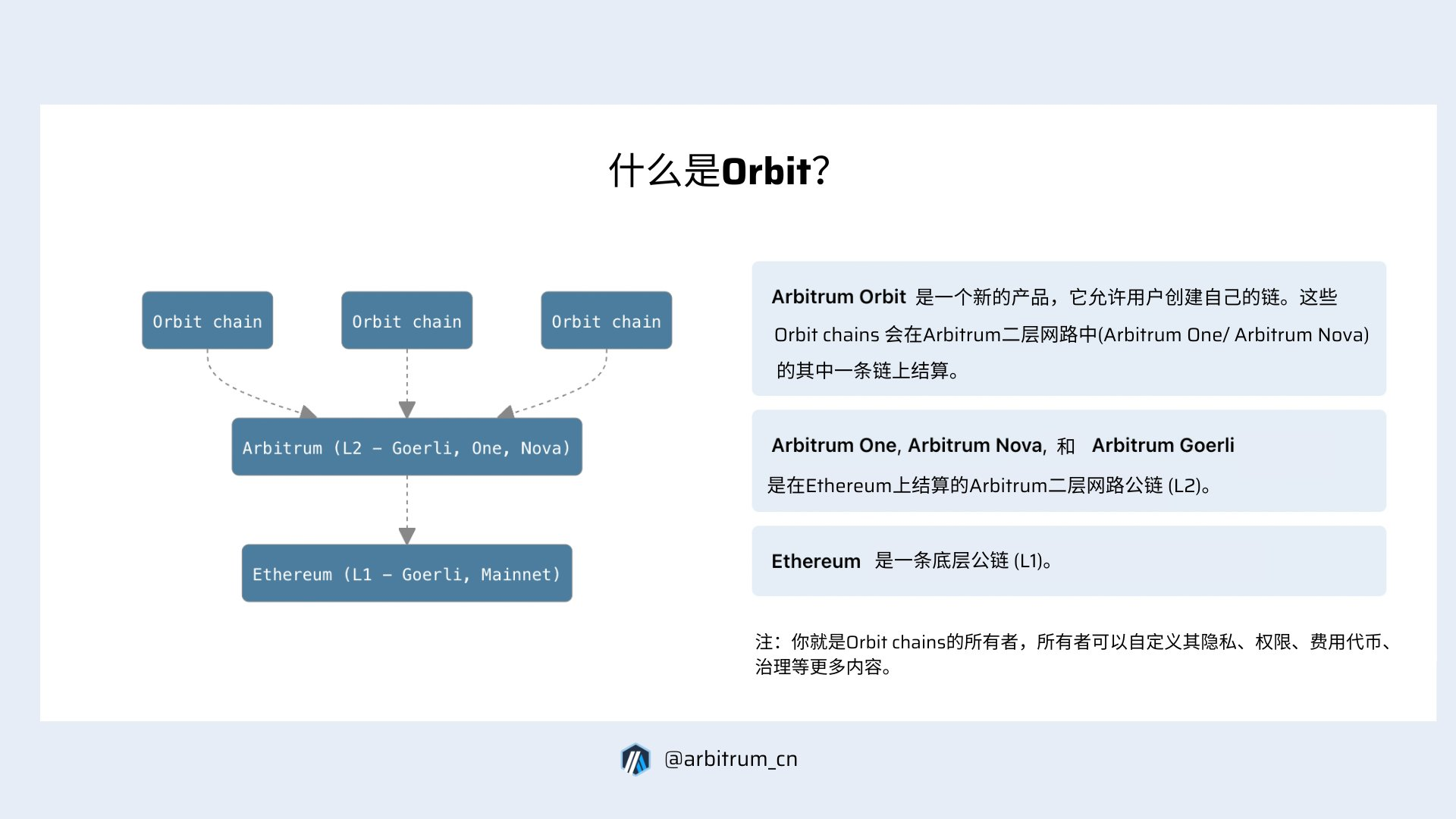 Currently, several applications have partnered with Arbitrum Orbit to create their own L3 networks. Among them, the Ethereum scaling service platform AltLayer has supported Arbitrum Orbit, allowing users to launch Arbitrum's L3 application chain in minutes using no-code tools; in June, the Xai network, designed for gaming, announced it would utilize Arbitrum Orbit technology to launch a gaming-specific L3 blockchain; in the same month, the DeFi derivatives trading platform Syndr announced the launch of Syndr Chain based on Arbitrum Orbit, with the testnet already online and currently in the internal testing phase, requiring an application to experience. Recommended reading: 《Layer2 Internal Competition Upgrade, Is It Necessary for Arbitrum and zkSync to Strongly Promote Layer3?》
Currently, several applications have partnered with Arbitrum Orbit to create their own L3 networks. Among them, the Ethereum scaling service platform AltLayer has supported Arbitrum Orbit, allowing users to launch Arbitrum's L3 application chain in minutes using no-code tools; in June, the Xai network, designed for gaming, announced it would utilize Arbitrum Orbit technology to launch a gaming-specific L3 blockchain; in the same month, the DeFi derivatives trading platform Syndr announced the launch of Syndr Chain based on Arbitrum Orbit, with the testnet already online and currently in the internal testing phase, requiring an application to experience. Recommended reading: 《Layer2 Internal Competition Upgrade, Is It Necessary for Arbitrum and zkSync to Strongly Promote Layer3?》
Regarding Arbitrum ecosystem incentives, on July 20, Arbitrum Foundation announced it would grant funds to eligible dApps and infrastructure on Arbitrum Nova and Arbitrum One to promote ecosystem development.
Optimism is moving towards a superchain kingdom
Optimism is a Layer 2 scaling solution built on Optimistic Rollup. Currently, the value of crypto assets locked on the chain is $2.42 billion, with a market share of 24.2%, making it the second-largest Layer 2 network. Its native token OP is currently priced at $1.48, with a market cap of $950 million, ranking 45th among crypto assets.
Compared to Arbitrum, the ecological prosperity of Optimism is slightly inferior. According to DeFiLlama data, there are currently 153 recorded applications in the Optimism ecosystem.
However, Optimism has embarked on a path unique to itself in the Layer track with the OP Stack component, moving towards a superchain kingdom.
OP Stack is an open-source modular toolkit launched by Optimism, covering data availability layers, execution layers, settlement layers, governance layers, and more. Developers can assemble a customized Layer 2 network using the OP Stack toolkit according to their needs.
As a result, OP Stack introduces the concept of a superchain to Optimism, which refers to a group of Layer 2 blockchains (also known as OP chains) built on OP Stack.
However, superchains differ from multichains; the current multichain architecture (like Cosmos) introduces new consensus algorithms on each chain, requiring a new set of validators to be activated whenever a new chain is launched, and the security and information between chains cannot be shared. In contrast, superchains are standardized, with consistent consensus algorithms, and security is guaranteed by the Layer 1 blockchain (Ethereum mainnet), allowing resources and information to be shared between chains due to their standardized architecture.
For example, in a superchain, if A Layer 2 and B Layer 2 networks are built to the same standard, then wallets and applications, as well as tokens on both chains can directly interoperate, and users no longer need to focus on whether it is chain A or chain B; they can view both as a single unit, the "superchain." This allows developers to build applications targeting the entire superchain.
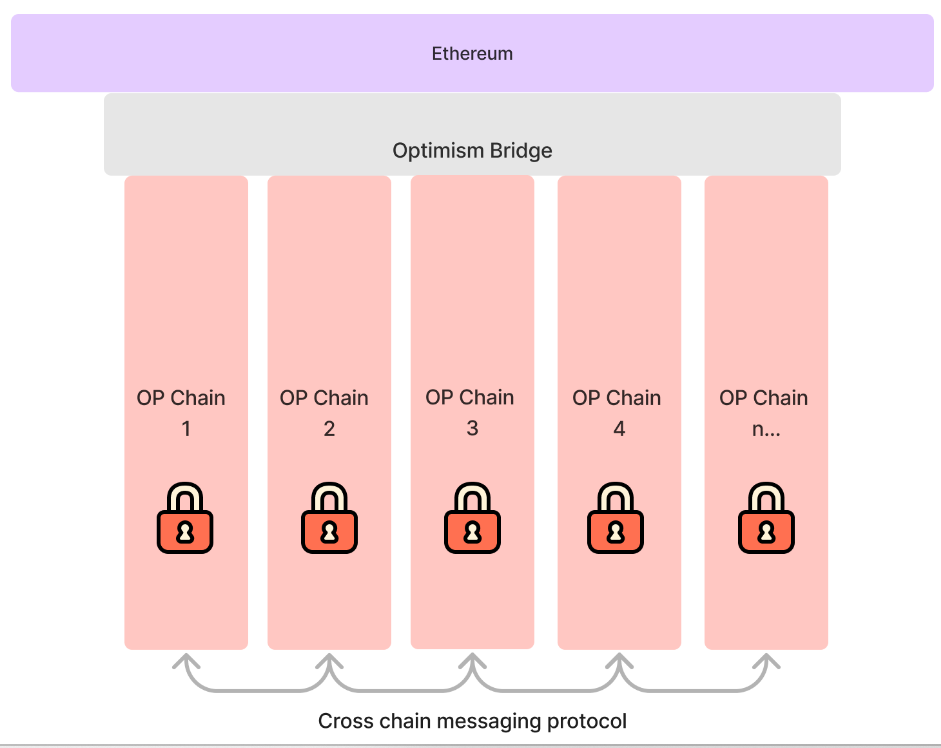
On June 24, the Optimism blockchain announced its rebranding to OP Mainnet to distinguish it from the Optimism ecological chains built on OP Stack. OP Mainnet is just one of the foundational chains among many Layer 2 superchain networks. This can be understood as currently, in the Optimism ecosystem, OP Mainnet and several other L2 networks built on OP Stack together form the Optimism superchain kingdom.
Currently, there are dozens of Layer networks built on OP Stack.
Among them, by mid-July, three projects announced they would launch related Layer 2 networks based on OP Stack.
On July 16, Layer 1 public chain Celo development organization cLabs proposed to transform Celo into a Layer 2 based on OP Stack;
On July 12, the ZK-based Layer 1 public chain Manta Network launched the Layer 2 network Manta Pacific, designed specifically for zero-knowledge proof (ZK) applications based on OP Stack, and renamed its Layer 1 network Manta to Manta Atlantic. In the future, the Manta ecosystem will consist of Manta Atlantic and Manta Pacific;
On July 7, the Public Goods Network (PGN), supported by Gitcoin, was also built on OP Stack.
Prior to this, several well-known Web3 companies had deployed Layer 2 networks using OP Stack.
Base---Coinbase announced the launch of Layer 2 network Base based on OP Stack, which is now open to developers for mainnet development and supports application deployment, expected to be publicly developed in early August;
opBNB---BNB Chain launched the opBNB testnet based on OP Stack, with the mainnet expected to launch in Q3 2023;
Magi---a16z announced in April the launch of the Rollup client solution Magi created based on OP Stack;
Worldcoin ID---Worldcoin ID announced it would build an application chain based on OP Stack, focusing on the on-chain identity system-related ecosystem.
Many gaming and NFT projects have also chosen to build their networks based on OP Stack.
Zora Network---The NFT trading market Zora announced it would launch a Layer 2 network Zora Network based on OP Stack.
Loot Chain---The Loot ecosystem project Adventure Gold DAO adopted OP Stack to build the Layer 2 network Loot Chain, using its native token AGLD as the Gas Token;
OPCraft---The on-chain game developer Lattice created a dedicated chain for the on-chain virtual world game using OP Stack.
Additionally, in terms of network performance, Optimism has been continuously optimizing and improving. In June, Optimism announced the completion of the Bedrock upgrade for the mainnet, further reducing transaction fees, shortening deposit confirmation times, and enhancing performance. According to Dune data, since the completion of the Bedrock upgrade, the average gas fee per transaction on Optimism has decreased by approximately 75%, making the Optimism mainnet the cheapest Ethereum L2 network for token exchanges, with each transaction gas fee currently around $0.1.

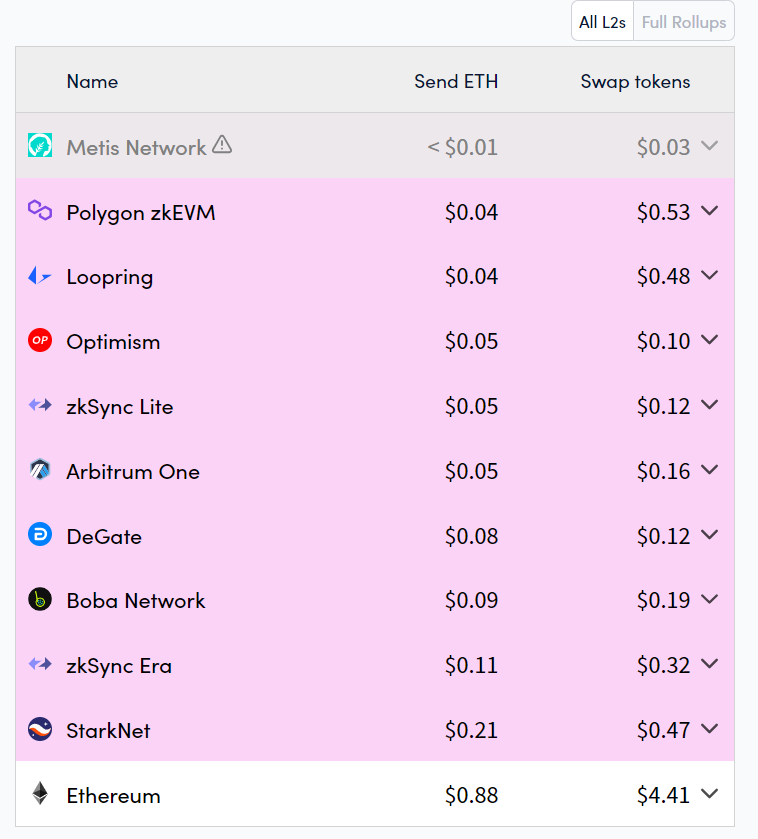
Optimistic Rollup Fork Project Metis Network
Metis Network (abbreviated as Metis) was originally built as a Layer 2 scaling network based on Optimistic Rollup technology. Due to adjustments made to Optimistic Rollup, it has improved the delay issue of extracting Layer 2 assets to Layer 1, allowing asset withdrawals to take only a few hours or minutes. Therefore, Metis is also considered a fork project of Optimistic Rollup, with its mainnet known as Andromeda.
On July 13, the MetisDAO Foundation officially announced the launch of its incubated new project ZKM (formerly Project M) and upgraded the existing Optimistic Rollup to Hybrid Rollup. ZKM is expected to launch its testnet by the end of the year.
ZKM is a Layer 2 scaling solution using the Hybrid Rollup mechanism. Hybrid Rollup combines the existing Optimistic Rollups and ZK Rollup into a single Rollup protocol, leveraging their respective advantages. The ORU architecture provides developers with an easy-to-code environment while offering users the finality, security, and decentralization that ZKRU can provide, ensuring timely withdrawals while maintaining security.
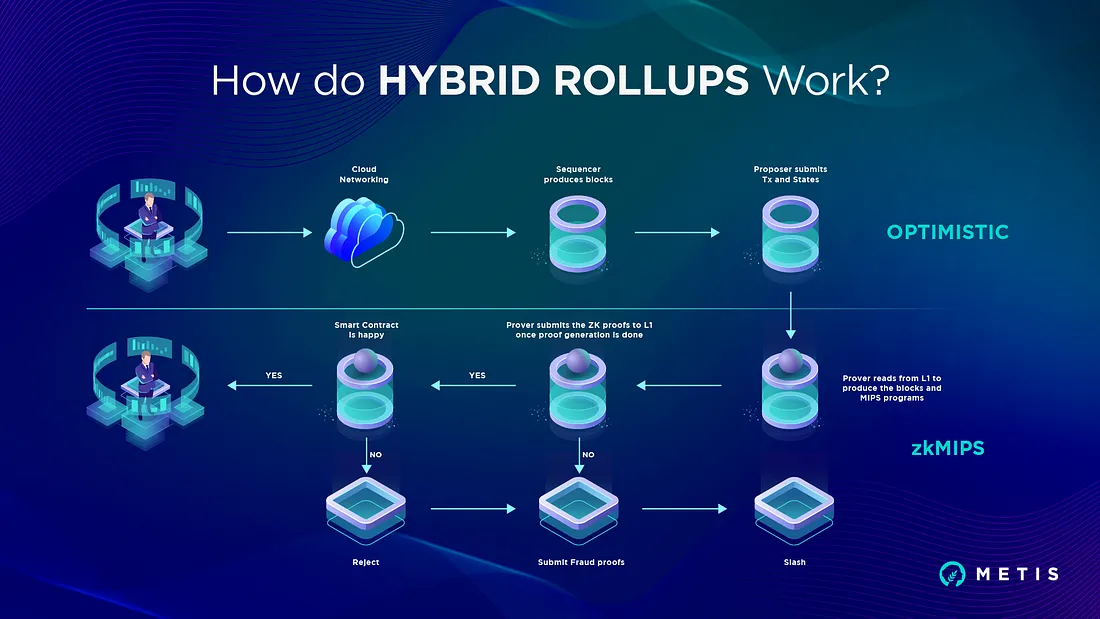
In fact, as early as March, MetisDAO stated in a blog that it was developing a Hybrid Rollup that combines Optimistic Rollup (OPR) and zero-knowledge proof ZK Rollup, integrating the scalability of Optimistic Rollups with the security of ZK Rollup. This will be an important task in the 2023 roadmap for the Metis mainnet Andromeda.
Currently, the TVL on the Metis chain is $88.97 million, ranking 8th among numerous Layer 2 networks. Its mainnet Andromeda uses the METIS token as the payment method for on-chain gas fees, with each transaction gas fee being $0.0064. The current price of METIS is $17, with a market cap of $74.3 million.
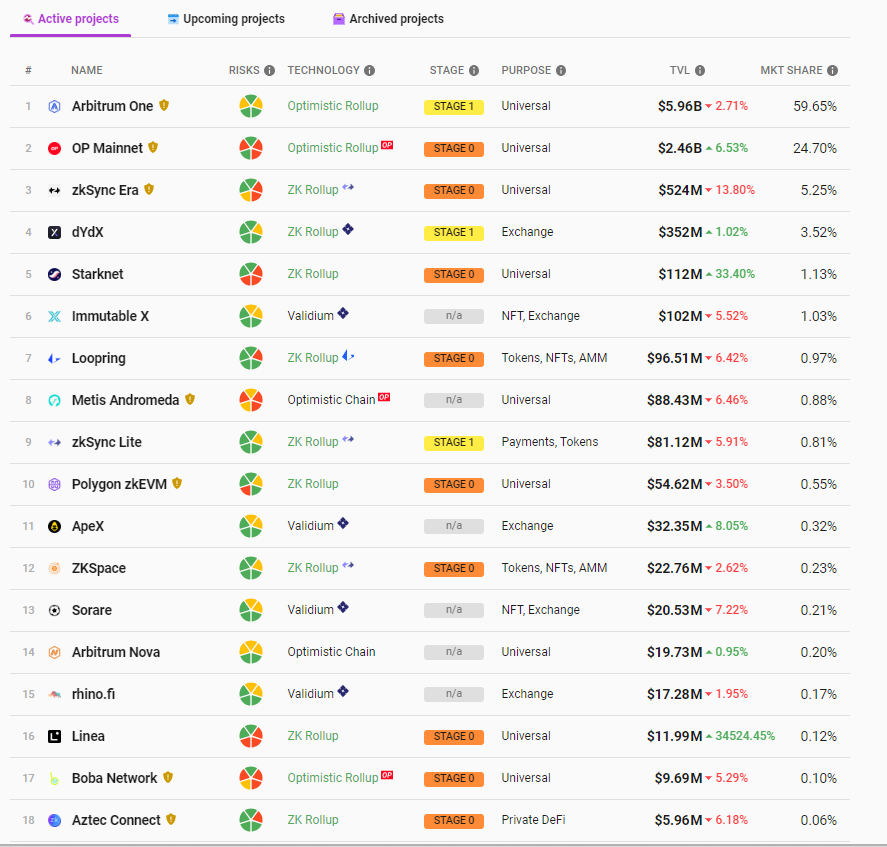
According to DeFiLlama data, there are 40 ecological applications on the Metis chain, including mainstream DeFi applications like Aave, SushiSwap, and Stargate.
Multichain Layer 2 Scaling Solution Boba Network
Boba Network is also an Ethereum Layer 2 scaling solution built on Optimistic Rollup technology, created by the Enya team, core contributors of the OMG Foundation. In April last year, Boba Network completed a $45 million Series A financing round at a valuation of $1.5 billion, with over 400 participants, including well-known crypto exchanges like Crypto.com, Huobi, and BitMart.
Unlike other Layer 2 solutions, Boba Network is a multichain Layer 2 scaling solution that not only supports scaling Ethereum but can also scale all EVM-compatible Layer 1 blockchains, becoming their Layer 2 network. Currently, Boba L2 has been deployed on networks such as Moonbeam, Fantom, Avalanche, and BNB Chain.
Currently, the TVL on Boba Network is only $9.75 million, with 24 ecological applications, including SushiSwap, OolongSwap, and the lending application Bodh Finance.
Layer 2 Network Mantle Network backed by Bybit
Mantle Network is a modular Layer 2 scaling solution based on Optimistic Rollup, incubated by BitDAO, which launched its testnet in January this year. Since BitDAO is a decentralized autonomous organization initiated by the centralized exchange ByBit, Mantle Network is also regarded as a Layer 2 network supported by ByBit.
At the EthCC conference in Paris on July 17, Mantle Network announced the launch of its mainnet Alpha version.
Unlike Arbitrum and Optimism, Mantle's architecture adopts a modular design, meaning that the core operations of the blockchain (such as execution, consensus, settlement, and data availability) can be split and executed on specialized layers for higher network efficiency. In Mantle, Optimistic Rollup and data availability solutions are combined to ensure it inherits Ethereum's security while providing cheaper and more accessible data availability.
The mainnet in Mantle provides the execution layer, while consensus and settlement occur on L1 Ethereum, and data availability (data storage and data publishing) is handled by a dedicated service provider, Eigenlayer, enhancing on-chain formation and providing new scalability possibilities.
In June, BitDAO announced that BitDAO, Mantle, and the BIT ecosystem would be unified and merged into Mantle, with the MNT token serving as the unified token for its ecosystem, and the BIT token convertible to MNT at a 1:1 ratio.
Currently, Mantle Network has deployed 89 DApp applications covering DeFi, infrastructure, and gaming products, but no mainstream Ethereum applications have migrated or deployed.
2: zkRollup Family: 6 Major Networks: ZkSync, Starknet, Polygon zkEVM, Linea, Scroll, Taiko

Currently, zkRollup family networks mainly focus on compatibility with Ethereum EVM, which can be categorized into four types based on Vitalik Buterin's blog "The different types of ZK-EVM": fully equivalent to Ethereum, fully equivalent to EVM, almost equivalent to EVM, and equivalent to advanced programming languages.
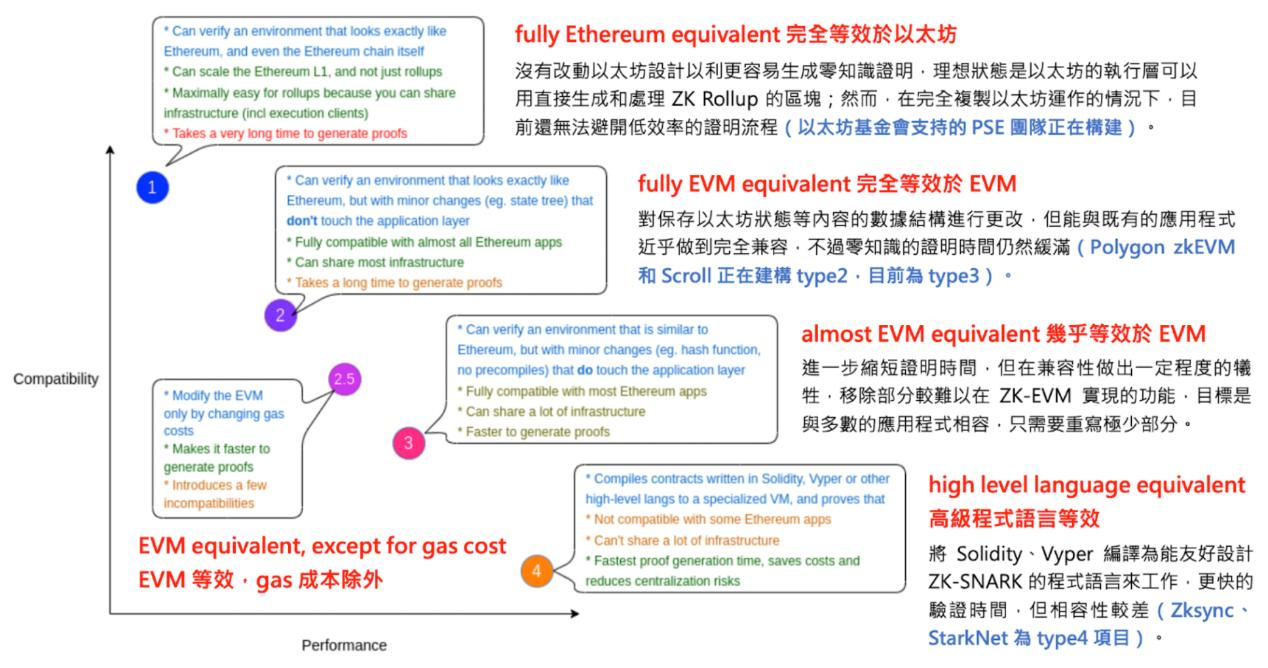
Among them, Taiko zkEVM belongs to the first type (Type-1), fully equivalent to Ethereum, with no changes to the Ethereum system design, and ZK proofs taking a long time (several hours) to generate; Polygon, Linea, and Scroll belong to the third type (Type-3), almost equivalent to EVM, making some concessions in equivalence to shorten proof times and simplify EVM development, aiming to become the second type of fully equivalent EVM; zkSync Era and StarkNet belong to Type-4, using their own advanced programming languages, with short verification times but poorer compatibility.
Compatibility means whether developers can provide the same development experience as on Ethereum, the ease of deploying applications, and proof verification time indicates how long it takes for user funds to return from L2 to L1. If proof generation takes several hours, it means users cannot bridge their funds back to L1 during that time.
ZkSync launches development components zkStack for building L2 or L3
ZkSync is a zkRollup representative scaling solution developed by the MatterLabs team based on zkSNARK (non-interactive zero-knowledge proof). In February last year, ZkSync announced the renaming of its zkSync 2.0 network to zkSync Era, while zkSync 1.0 was renamed to zkSync Lite. The former, zkSync Era, is a ZK Rollup project based on zkEVM, achieving EVM compatibility; the latter is not EVM compatible, mainly focusing on the payment sector.
Currently, the TVL on zkSync Era is $524 million, ranking third among numerous Layer 2 networks, making it a leading project in the zkRollup family.
In June, zkSync officially announced the launch of modular open-source components ZK Stack for building customized zkRollup networks, allowing developers to build customized zkRollup L2 and L3 (also known as HyperChain) based on this toolkit.
On July 16, zkSync Era announced it would airdrop the LIBERTAS OMNIBUS series NFTs to 10,000 randomly selected users from approximately 180,000 active community members. However, later users discovered that the so-called randomness was actually based on sorting the strings of 180,000 addresses and airdropping NFTs to the top 10,000 ranked users. The official later stated that the initial NFT distribution addresses were inaccurate and would restart the LIBERTAS OMNIBUS NFT issuance in the coming weeks.
Additionally, on July 17, zkSync Era announced the launch of a new proof system Boojum, transitioning from zkSNARK to zkSTARK-supported proof systems.
Starknet launches application chains
StarkNet is a zkRollup scaling network developed by StarkWare based on zkSTARK. The StarkWare scaling solutions mainly consist of StarkNet (Layer 2 scaling network) and StarkEx (scaling technology), with the former primarily aimed at users and the latter providing scaling solutions for Ethereum applications. The initial dYdX, DeversiFi, and Immutable X were created based on StarkEx.
Currently, the most used and mentioned by users is StarkNet, with a TVL of $112 million, making it the second-largest zkRollup network. However, StarkNet is not compatible with Ethereum EVM.
Regarding the compatibility issue with Ethereum EVM, StarkNet plans to achieve this through two projects in its ecosystem: kakarot and Warp. Kakarot is a zkEVM implemented on Starknet using the Cairo language, belonging to Type-2.5. In June, Kakarot received Pre-seed round financing from StarkWare and Vitalik Buterin, and is expected to launch its testnet soon; Warp is a translator that converts Solidity code into Cairo code to achieve compatibility with Ethereum EVM, belonging to Type-4.
Thus, Warp represents compatibility at the advanced language level, while Kakarot represents compatibility at the EVM level.
On July 19, StarkWare co-founder Eli Ben-Sasson announced at the EthCC conference in Paris that Starknet is about to launch Starknet application chains (Appchains). The StarkNet stack allows applications to launch customized StarkNet application chains. On July 21, the crypto liquidity platform Paradigm incubated a decentralized perpetual derivatives Layer 2 application chain named Paradex on Starknet.
Polygon zkEVMbecomes one of many ZK networks in Polygon 2.0
Polygon zkEVM is an Ethereum Layer 2 zkEVM scaling solution built on ZK Rollup technology, with the testnet mainnet launched on March 27. Polygon zkEVM is currently almost fully equivalent to EVM and is striving to become a fully equivalent EVM version.
In June, Polygon announced the launch of the Polygon 2.0 upgrade, with Polygon PoS upgrading to zkEVM Validium to make it compatible with ZK technology. Polygon 2.0 is a multi-chain network ecosystem driven by ZK technology, including zkEVM, PoS, and Supernets sub-networks. In fact, as early as March this year, the Layer 2 network Immutable X, focused on gaming scenarios, announced a partnership with Polygon to launch a new zkRollup scaling solution Immutable zkEVM; Web3 gaming infrastructure developer zkMeta stated it is working with Polygon to create a gaming-specific zkRollup.
In July, the official proposal for Polygon 2.0 upgraded the original MATIC token to POL and released a new POL token white paper. The POL token will operate across all Polygon ecological networks, with an initial supply of 10 billion, increasing at a rate of 2% per year. The Polygon PoS chain will use POL as the means of gas fee payment, while other chains can choose POL or issue their own native tokens. Additionally, Matic is currently priced at $0.76, with a market cap of $7.15 billion, ranking 12th.
On July 13, the Polygon team announced plans to create a new governance framework for Polygon 2.0, with the new governance model forming "three major governance pillars," mainly including the expansion of the Polygon Improvement Proposal (PIP) framework, the introduction of an ecological committee for system smart contract upgrades, and community treasury governance to fund promising ecological projects.
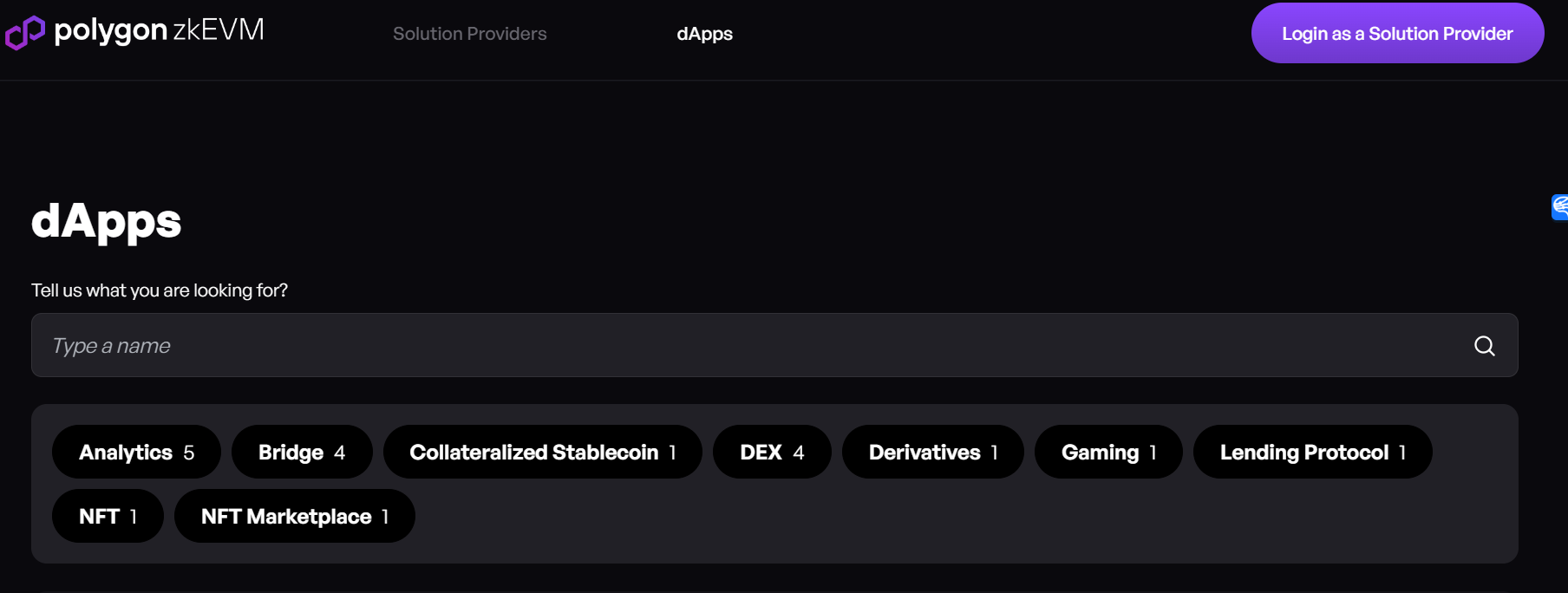
Currently, the TVL on Polygon zkEVM is $54.49 million, with 19 deployed DApps, of which 9 are data infrastructure and cross-chain bridges. Other applications include stablecoin QiDao, DEX Quickswap and Leetswap, lending protocol 0vix, NFT trading platform Zionic, and the machine gun pool AntFarm.
ConsenSys Ethereum Layer 2 Solution Linea
Linea is an EVM-compatible Zk-rollup Layer 2 scaling solution developed by ConsenSys, the parent company of MetaMask.
At the EthCC conference on July 18, ConsenSys announced that the Linea zkEVM mainnet alpha is officially open to the public, and relevant NFTs were airdropped to participants during the Linea Voyage event.
According to Rootdata, there are 71 ecological projects in the Linea ecosystem, including deployed lending applications LineaBank, DEX platform FWDEX, cross-chain exchange aggregator XY Finance, cross-Rollup chain Owlto Finance, NFT market Zoni, and mainstream DeFi applications like Aave, Airswap, Sushiswap, and Pancakeswap that are migrating and deploying.
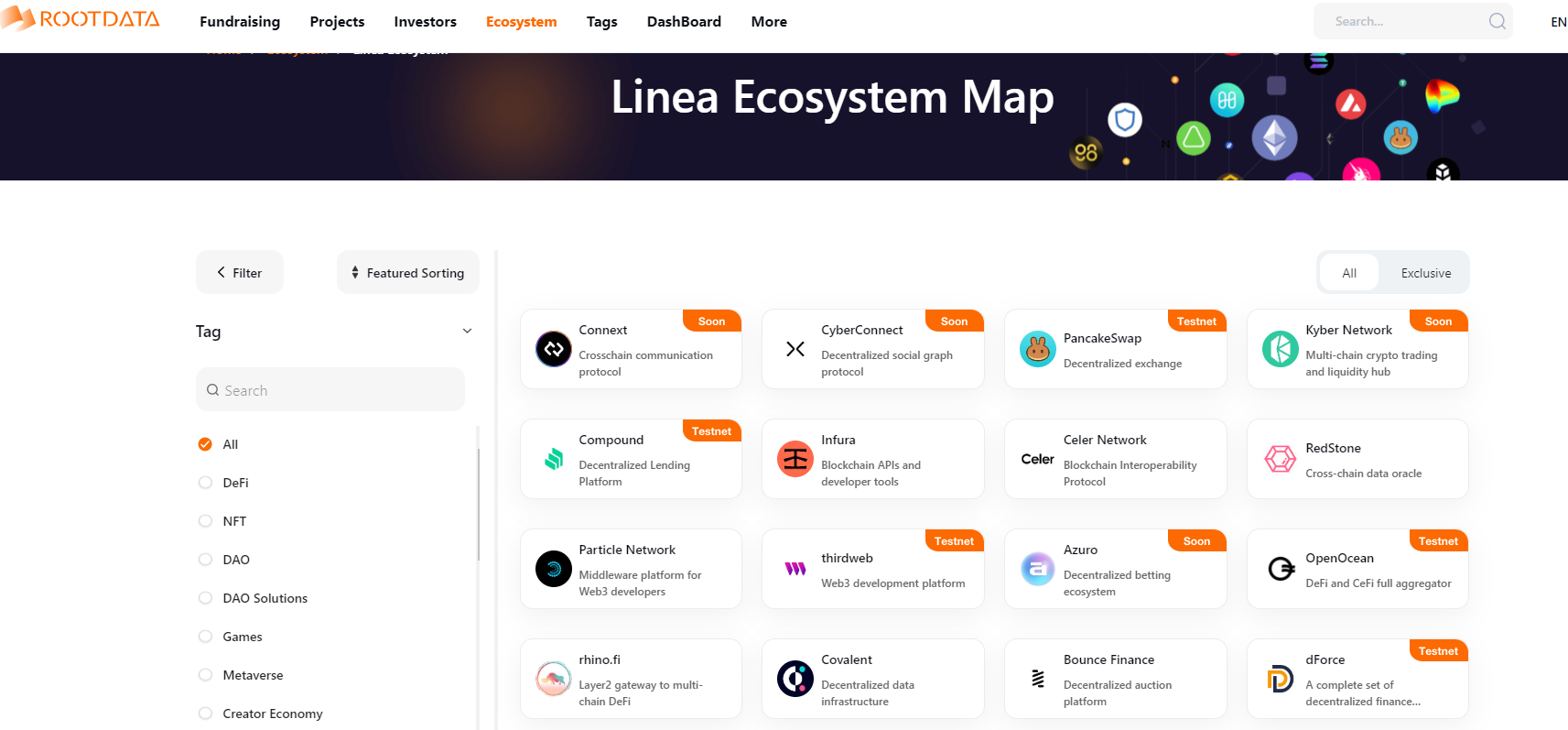
Currently, the TVL on Linea is $11.99 million.
Regarding whether the Linea network has a token, the official response is that the Linea network currently uses Ethereum bridged directly from the Ethereum mainnet as its ecological token. However, many users still expect the Linea network to issue new governance tokens like Arbitrum and other Layer 2 networks and airdrop them to users.
Scroll is also based on zkEVM zkRollup to scale Ethereum, launching the Scroll Alpha testnet on Goerli in February this year, and is still in the testnet phase.
In terms of EVM compatibility, Scroll is similar to Polygon zkEVM and is also striving to achieve full equivalence to EVM.
In April, Scroll co-founder Sandy Peng stated at a conference that the mainnet would launch in the next three to four months. However, as of July 21, there has been no public information released regarding the progress of the Scroll mainnet.
Loopring Taiko Protocol Developed Taiko
Taiko is a zkRollup scaling solution created by members of the Loopring protocol team (zkEVM belongs to Type-1), which later separated from Loopring to develop independently.
According to the crypto data platform RootData, on June 8, Taiko completed a total of $22 million in two rounds of seed financing, with the first round raising $10 million led by Sequoia China at the end of Q3 2022. The most recent second round raised $12 million, led by Generative Ventures.
On July 18, Taiko announced the launch of the Alpha-4 testnet (Eldfell L3), aimed at testing the performance of deploying L3 networks based on Taiko, allowing Taiko to serve as the settlement layer for L3 networks. In fact, as early as early July, the established zkRollup scaling solution Loopring announced the official launch of its L3 network on the Taiko zkEVM Alpha-3 testnet, specifically tailored for DeFi and NFT applications.
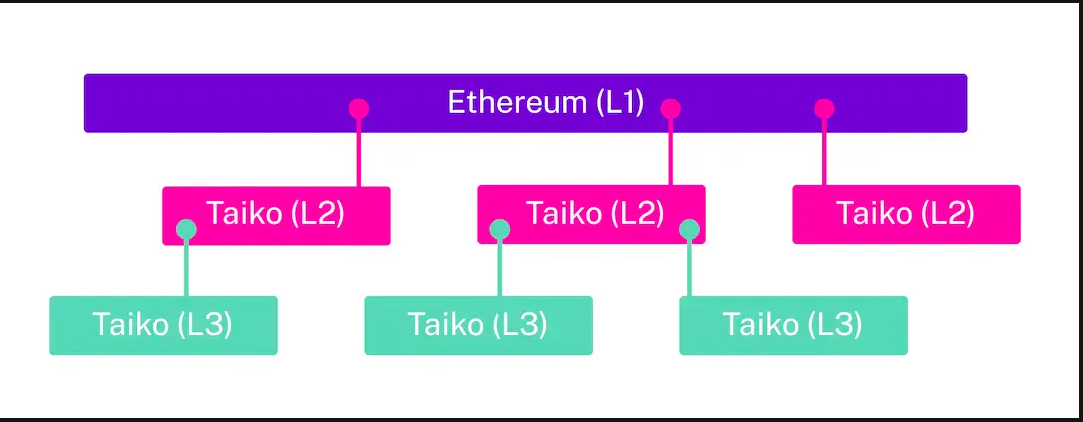
At the same time, Taiko announced the launch of a community funding program aimed at discovering and supporting innovative projects built and developed on the Taiko ecosystem, providing them with economic incentives and developer resources. All grants will be awarded in the form of Taiko's native token TTKO in the future.
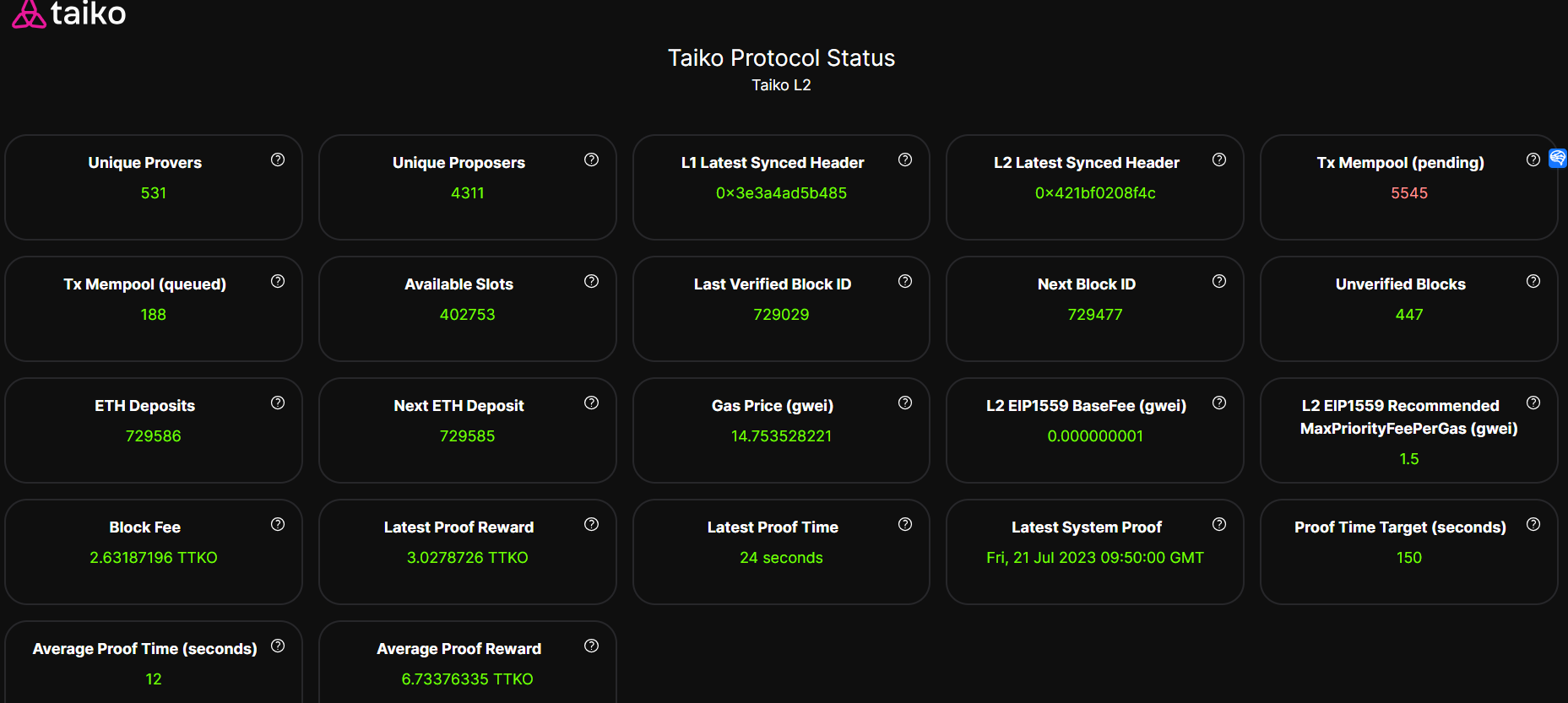
According to Taiko's official website, the current amount of ETH deposited is approximately 730,000, worth about $130 million.







